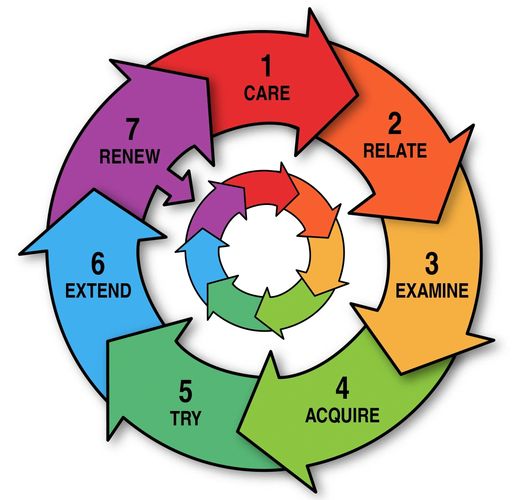The rainbow logic of change is your key to navigating this site. You will see it again and again and it's your key to understanding how the CHANGE process works.
The color scheme of the diagram is intended to have a certain logic.
It starts with red for CARE, think hot, angry, upset but not necessarily thinking too clearly.
Then, as various people get involved in constructive ways, it cools down to orange in RELATE, and then YELLOW, as in “Let’s figure out what the real problem is that we are so upset about.”
As we move toward solutions, (ACQUIRE and TRY) the world becomes greener, and when the solution spreads (EXTEND), we enter the clear blue sky of solution land.
From the blue, we begin again to be concerned with (a) whether we have really done a good job, and (b) whether we should be thinking again about the whole swath of problems that are out there. This brings us to RENEW, blue merging to red as in purple or violet.
The circle keeps turning, and the rainbow follows.



